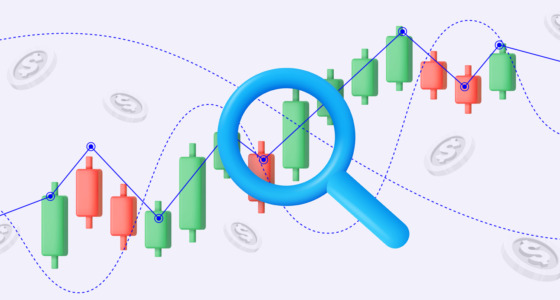

Did you know that electronic trade orders take under 200 microseconds to fill? You simply can’t reverse if you made a mistake. Aside from quick reaction and steel nerves, successful intraday trading requires consistent work methods. They are a key to progress in day trading and the traders’ main tool, without which they become ordinary investors, wallow in security and eventually leave the market due to terrible losses. A list of top 10 trading strategies will help you enter this field quickly and easily.
What makes day trading difficult?
Day trading requires a fair amount of presence and knowledge for you to become successful. Considering its rising popularity, you will likely be going against professionals that made this their career. Not only do these people have the connections and technology, but they also have the experience.
These people are set for success, and if you also get on the bandwagon, it means more wins for them. The more investments people make, the more it gives them an opportunity for better earnings.
You also need to keep in mind that regardless of how small your gains are, Uncle Sam will want a part of them. You will not be spared from paying the marginal rate for taxes, even for profits held for less than a year. On the upside, any losses that you make can offset your gains.
As a beginner, it is also very easy for you to be swayed by emotions. For instance, when you put your capital on the line, losses can cause you to exit a trade too fast. A professional may be able to hang onto their wits, but as a beginner, this may prove challenging.
How to limit losses when day trading
Day trading is a game of control and limiting your losses. If you want to win as much as possible and keep your capital safe, here is what you have to do:
1. Set up a stop-loss order
As a trader, you need to learn how to limit your trading risks. When you don’t know or can’t see when to stop, a stop-loss order can prevent you from losing more than you are willing to lose. Trades are usually volatile, but a stop loss order will “feel” when you are entering the danger zone and will close the trade.
2. Set a limit for financial loss
Similar to the stop-loss order for each trade, you may also want to set a daily limit for financial loss. If you are day trading, chances are that you are conducting multiple trades per day. Depending on each trade, you may have good days and bad days. Setting a financial loss limit allows you to exit the trades and take the day off. After all, tomorrow is another day, and you can stick to your plan with perhaps more luck.
3. Test the strategy
You’ve placed the appropriate limits in order; now is the time to create your trading strategy. However, before you go “live” with it, you may want to test it first. So, make sure that it is within your risk limit. If it isn’t, then make the appropriate adjustments.
If everything is alright, then you may begin the testing. Go through past charts and find a point of entry that can match yours. Check the chances of profitability based on previous trades. Before trading with your capital, you may consider using a demo account as well to help prevent losses.
Which trading strategy is easiest for a beginner?
If you are a beginner, then the easiest way for you to trade is to follow a trend. Although smaller, trends are more likely to bring you earnings. Contrarian investing (i.e., going against the herd) can bring more profit if done right, but it can be very difficult for beginners.
You need a lot of knowledge and experience, along with rapid decision-making for this type of trade to be successful. You have to buy when the market is falling or sell when it is on the rise. Unless you do thorough research, there is a good chance your investment will not go the way you expected it to.

The sliding average strategy
It’s best to begin our explanation of this earning method with the easiest trading strategies for beginners. Sliding averages are a term that denotes the average value of the product price over a certain time period. This method is extremely simple: the point when the quotes are above the sliding average is known as the ascent, when it’s lower, it’s a downward trend. In addition, they also act as support and resistance zones, from which the product’s price can push off. The intersection of the averages indicates the entry into the position.
The momentum strategy
The basis of this strategy is formed by the impulses that arise from certain news related to the asset. The method has this name for a reason: stocks are selected for trading based on an active news stream, and in this case, the trader must study all the important news before choosing to invest in the market. The most important thing is to get into a position on time, catch and use the relevant news in a matter of minutes, hours or sometimes within a day.
Trading on reversals
This option is quite risky, since it involves investing against market trends. The trader’s task is to find stocks that are at their local minimum/maximum and sell them when the price changes abruptly. The strategy is complicated because of the difficulties in finding the true reversal lines. All the other day trading strategies are much safer than this оne, which is used in extremely volatile situations.
A breakout-based strategy
This method is the opposite of the previous reversal strategy. Some support and resistance levels are broken through only when trading volumes increase. If the price does break through the levels, the trader enters a favorable market position. In that case, the broken level is a full-fledged visual reflection of the supply and demand line. There’s a gap in demand behind the level: when the supply isn’t satisfied by potential customers, the price drops rapidly.
Gap and go strategy
The strategy is universal and can be used in long-term trading. The basis of this method is a simple purchase of shares that had opened with a down or up gap right at the beginning of the trading session. The adherents of this option acquire assets, and then wait for the gaps to close during the day. This is a fairly common practice, but it should be borne in mind that the gap can be left open for good – or at least for a very long time.
The thirty-minute range strategy
The essence of this method is to observe the market for half an hour in five-minute periods. After that, the trader draws a resistance line on the chart at the highest point that the market has reached in 30 minutes. A support line appears at the lowest level. This is the range of development. After that, a person waits until the market breaks through any of these lines and opens a transaction at that level.
Pivot strategy #1
We can say that all the best day trading strategies are based on pivot points. The first simple method of using these points is to buy assets when the market hits the pivot level, and sell when it reaches the resistance point. It’s best to buy assets in an ascending market, and sell them on a reversal of the level in a downtrend. When the market passes the third support level, it’s not worth it to make purchases. The price most often starts from this position, and selling traders try to take profits in every possible way.
Pivot strategy #2
Their support can be used in different ways, and work great as targets to increase profits. Another role of reference points is a trend indicator. If the market is located above the pivot, this is an ascent, if it’s under – prices are dropping. The purchase is carried out when the price goes up from this level, and the sale – when it goes down.
Chaikin Indicator
Different trading strategies seem to use the same indicator, but under a different guise. The volatility indicator invented by Marc Chaikin in the 1970s was an absolute breakthrough in technical analysis. It compares trading volume and the price movement for specific assets, and can be used to assist in decision-making both in intraday and daily trading, indicating the right time to buy or sell. It shows whether the asset is oversold or overbought, thus predicting imminent price reversals. In general, the idea is to carry out any market operations only when it crosses the A/D (Accumulation/Distribution) line, which is a result of comparing longer-term and shorter-term moving averages.
The opening gap
If there’s a gap at the opening, it means that more traders have now switched to one side of the trading. Such an imbalance also shows that the market will move in the same direction in the near future. A stock is successful and profitable when the gap opens below the minimum of the previous day.
As practice shows, you only need basic trading knowledge in order to get a successful start in this field. Keep reading up on online trading tips for beginners and the best strategies, don’t take unnecessary risks, and trading may become more than a hobby. Good luck!










